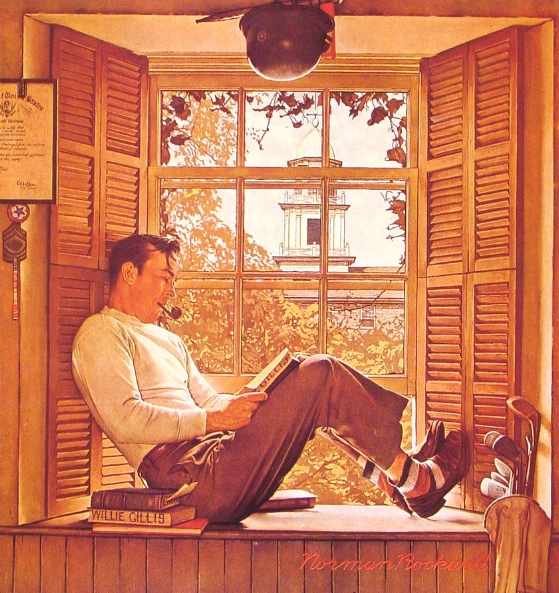
During the WWII years Norman Rockwell created a character named Willie
Gillis — an ordinary guy from a small town who joined the army.
Rockwell chronicled his experiences in the war in a series of Saturday Evening Post
covers. After the war, he showed us Gillis returned to civilian
life — above you see him in college, on the G. I. Bill, having
survived and put on a little weight.
It's a poignant image, for all it doesn't say. Gillis is
preparing himself for a “normal” life in post-war America, with his
pipe and his golf clubs — but the war souvenirs hanging over his head
suggest that he will always be haunted by memories out of place in a
“normal” world.
One of the virtues of Ken Burns' newest documentary The War
is that it addresses the sort of post-traumatic stress disorder that
returning vets, and the whole civilized world on some level, suffered
in the wake of WWII. For the vets it was peculiarly disorienting,
with feelings of triumph, guilt and shame all mixed up together.
It was
not something that could be talked about in the world Willie Gillis was
trying to become a part of.
All of this I think reinforces my notion that it was in art, in film noir
particularly, that such disorientation could be engaged in a safe way,
a socially acceptable way. You can read more thoughts on
the subject here.
